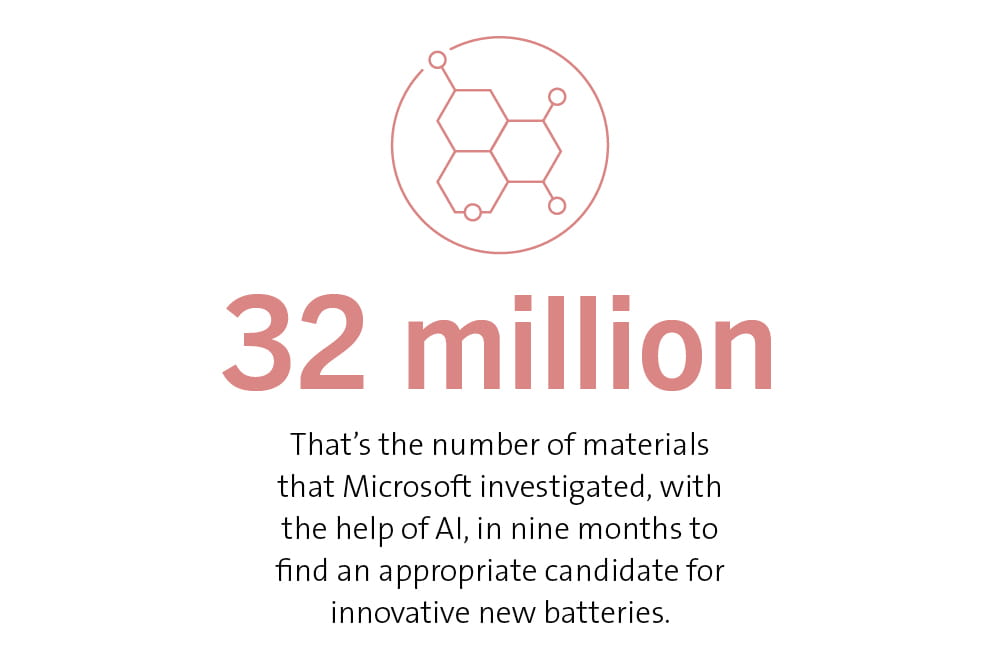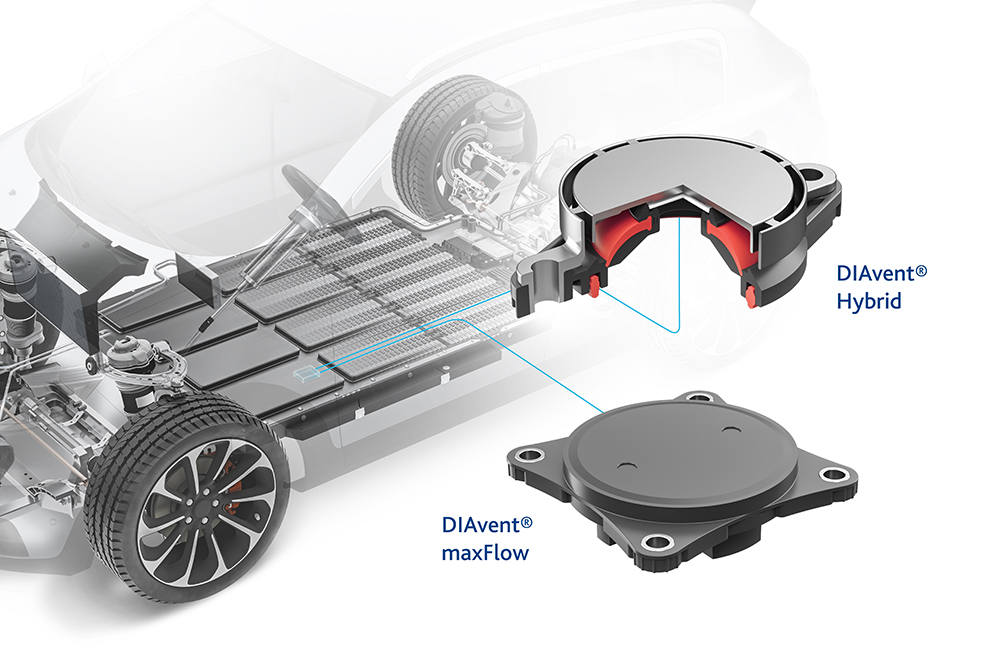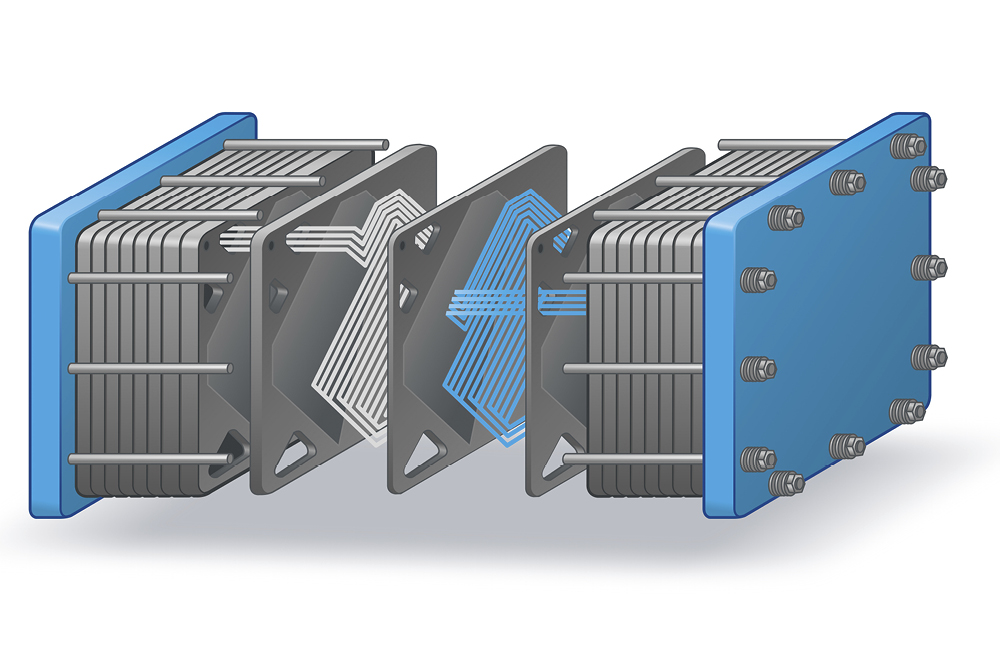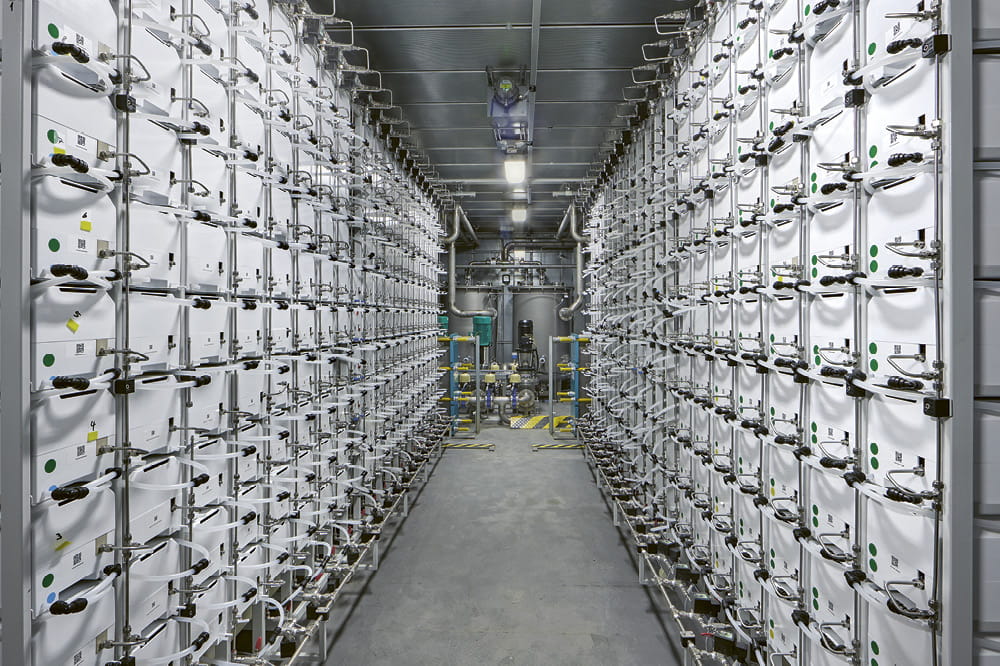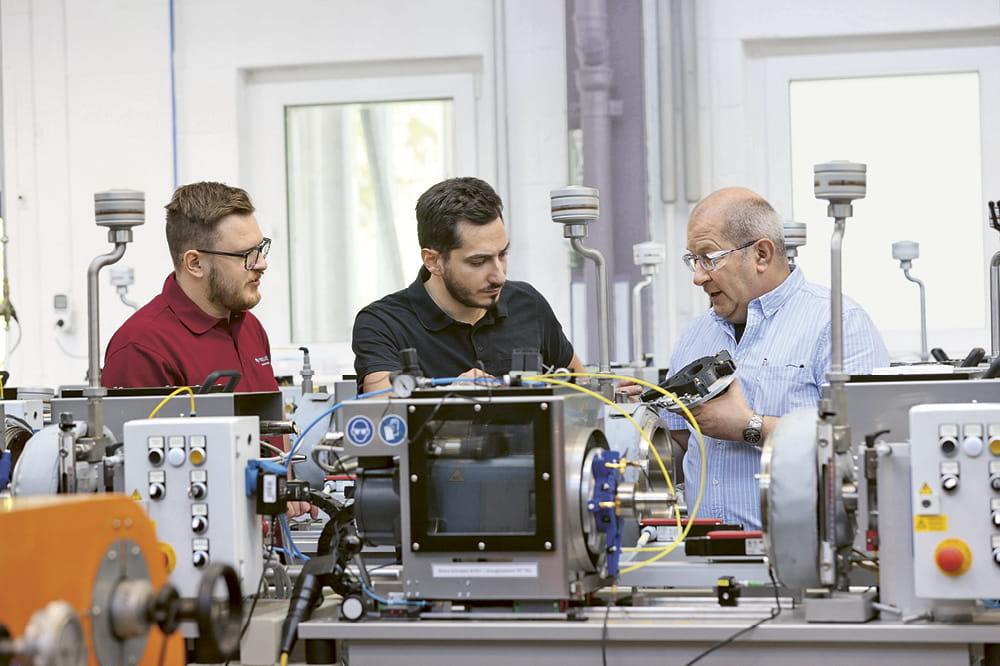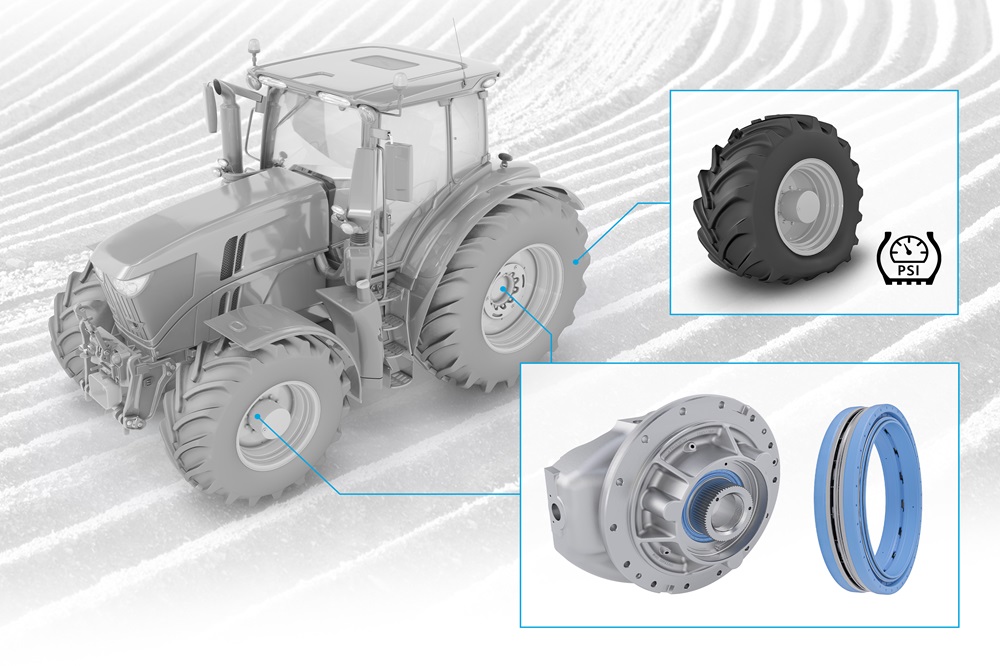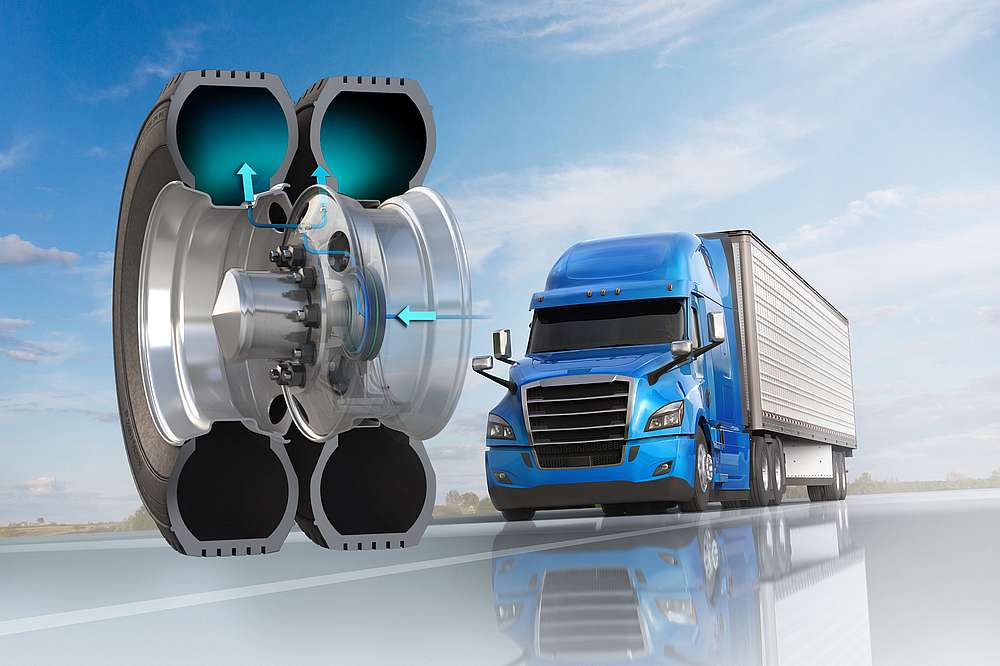Obtain news and background information about sealing technology, get in touch with innovative products – subscribe to the free e-mail newsletter.
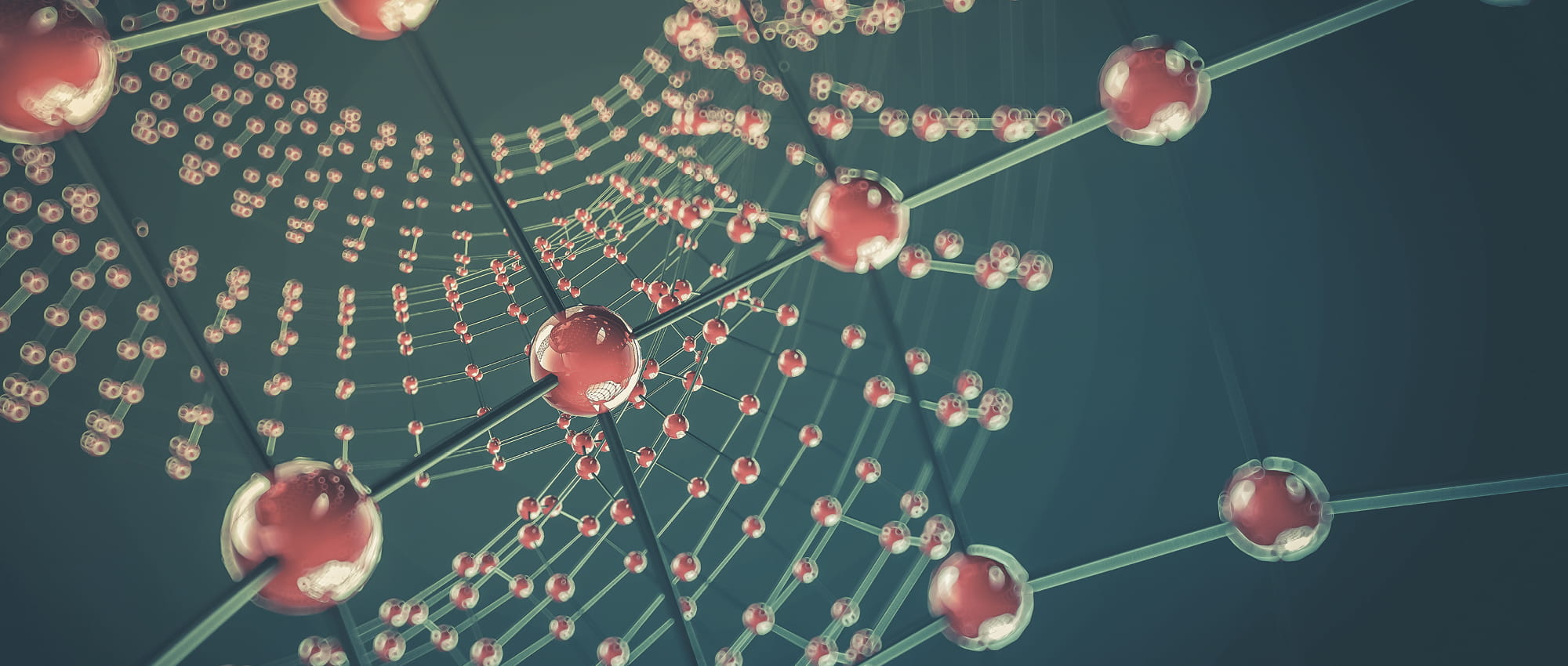
18.06.2024 | Story
How Materials Research Benefits from Artificial Intelligence
In the materials field, research and development takes time. Artificial intelligence is a promising tool for accelerating the process.
Early periods in human history vividly illustrate how mankind has adapted more and more materials to suit its own purposes. The materials improved everyday life and gave their names to entire epochs. In the Stone Age, people were still limited to natural materials – whether it was stone, wood, bone or ivory. Then people began to deliberately produce materials such as bronze, which is made from copper and tin. Iron, which is extracted from ore, followed later. The idea behind all these developments is still valid today: People were experimenting with available materials, gaining experience that paved the way to new ones.
Steadily Improving Processes
In the beginning, the advances occurred over many centuries, but materials research and development began to take off in the 19th century, at the latest. This was largely due to increasingly sophisticated processes. The experimental synthesis aimed to produce new compounds using defined chemical reactions. The newly created materials were designed to have exceptional, made-to-order characteristics. Success depended on choosing the right starter materials and subjecting them to predetermined chemical reactions. Experimentation has remained the basis for developing materials with the desired characteristics, albeit guided by an expanding store of experience and more expertise than ever before.
In the 20th century, the application of new technologies gave materials science another boost. The electron microscope made it possible to explore the structure of materials down to the atomic level, which led to new developments. High-tech processes resulted in completely new possibilities for research and led to a sudden increase in the availability of materials. The introduction of computers gave science another effective tool, enabling the simulation of characteristics, among other things.
We are at the dawn of a new era of scientific discovery.
Jason Zander, Executive Vice President of Strategic Missions and Technologies at Microsoft
More Effective Methods Thanks to AI
And yet, even more opportunities are opening up in materials research. There is an endless supply of materials waiting to be discovered, according to Dierk Raabe, Director of the Max Planck Institute for Iron Research in Düsseldorf. “We are still using ‘only’ a few thousand of the various types of metal alloys out of a seemingly infinite universe of 1060 or more potential combinations,” he said in an interview published in 2023. He believes that scientists and engineers need a better understanding of basic interrelationships. They especially need new, much more effective methods to discover novel materials. It is clear to Raabe that this means using artificial intelligence.
Research will continue to depend on work in the lab. But AI can greatly accelerate processes. © Shutterstock/Motortion Films
A researcher’s knowledge and experience are still key factors for recognizing and evaluating the potential of new materials. But Big Data analyses, text mining and machine learning can simplify research processes in many ways. AI can scour thousands and thousands of technical articles for certain topics and terms, exposing the target connections more quickly. Artificial intelligence also can develop materials virtually before the physical experimentation takes place in a lab. This raises possibilities that sound like fantasies. For example, Prof. Pascal Friederich of the Karlsruhe Institute of Technology (KIT) says that AI can predict “the characteristics of several million materials” based on the results of about 1,000 simulations. In the process, he says, AI took different formulations into account, along with the production conditions that have a major impact on material properties. Friederich says the goal is to produce the most promising candidates in the lab to validate the predictions. AI’s ability to suggest additional experiments based on automated experiments is another strength, he adds.
Huge Time-savings with AI
Artificial intelligence clearly has what it takes to reduce the effort and time required for materials research and development. That’s an appealing prospect for departments and institutes that do research and development – especially in sectors with strong competitive pressures that shorten the development timeframes. Google subsidiary Deepmind got people’s attention on the question of AI’s potential in late 2023. It announced that it had identified two million new materials in one year with AI’s help. The company drew on a database containing the descriptions of about 50,000 materials from researchers around the world. It believes that 400,000 of the new compounds could be produced in short order under lab conditions. They could prove helpful with the production of faster computer chips, more efficient solar panels or higher-performance batteries.
A team from Microsoft has advanced further along these lines working with one of the U.S. Department of Energy’s research institutes. Using several AI models over a nine-month period, the staff analyzed 32 million substances with the goal of identifying the most promising material to improve battery performance. By comparison, the development of the lithium-ion battery took about 20 years. The cooperating research institute is currently testing a recipe proposed by AI that consists of lithium, sodium and other elements. If successful, it could reduce the lithium content in batteries by up to 70 percent. Microsoft Vice President Jason Zander was euphoric as he described how quickly the highly promising battery material was identified with AI’s help. “We are at the dawn of a new era of scientific discovery.”
This article originally appeared in ESSENTIAL, Freudenberg Sealing Technologies’ corporate magazine that covers trends, industries and new ideas.
More news on the subject Technology & Innovation

Join Us!
Experience Freudenberg Sealing Technologies, its products and service offerings in text and videos, network with colleagues and stakeholders, and make valuable business contacts.
Connect on LinkedIn! open_in_new